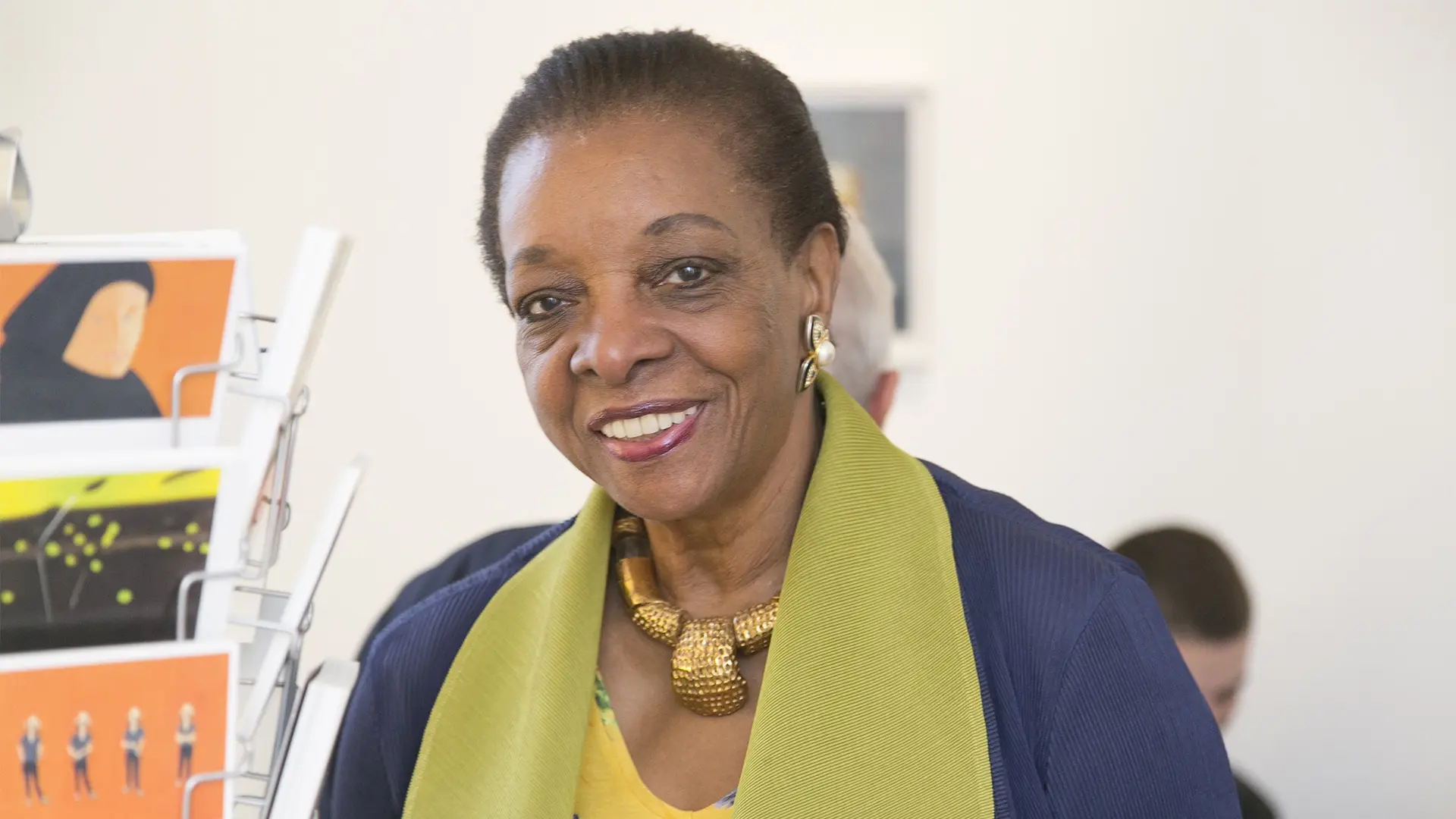In partnership with MiCodmc, a selection of establishments ripe for discovery during the 63rd edition of the Salone del Mobile.Milano, from 8th to 13th April
In conversation with Marva Griffin: 25 years of SaloneSatellite

Marva Griffin, Founder and Curator of SaloneSatellite - Ph. Gerardo Jaconelli
We talked to the founder and curator of the fair dedicated to young, under-35 talents. The main theme, this year, is “Connecting Design since 1998”
“Let me start with this: SaloneSatellite’s success is not about Marva Griffin”. The confession comes from the Salone del Mobile’s talent scout herself: someone with lots of humbleness, very little time on her hands, and a never-ending list of things to do for the new edition, as well as for her engagements as Ambassador of the Salone del Mobile.Milano’s international relations. Meetings, calls, and a phone that rings at all times. “Suitcase at the ready, I’m always traveling: in just a little over three months I’ve been to Shanghai, Paris, London, Berlin, Copenhagen, Miami, Toronto, Dallas, New York, and South Africa. I’m no war machine: it’s just my character. I love my job and enjoy it even when it’s tiring. That’s my rule of life.”
What do you think? I led the whole thing. Cosmit’s CEO Manlio Armellini shared my will to bring it to life. Then, as often happens, SaloneSatellite also had detractors in every shape and form. And perhaps that’s one of the reasons why we were so successful. I’ve always liked young people, their ideas. My brother always says that it’s thanks to their energy that I maintain this untiring passion. Let’s not forget that Fuori Salone was born at the same time, so anyone who could afford to found a little space and paid to showcase their products in the city. The main problem was nobody really hit the mark.
They wanted to show their prototypes to the industry, exhibitors, furniture manufacturers. Above all, they wanted people to start knowing their name. The first edition of SaloneSatellite was a huge success, so from then on, everyone wanted to exhibit there. After 25 years, I can say we’ve reached our goal.
I still remember when Armellini called me, after I had spoken to him about the needs of emerging designers. I took the call and they told me, “We’ve got room, see what you can do to bring in some kids.” The fair had assigned us hangar number 9, a special place where antique shows used to be held.
I needed someone to help me with the layout for Satellite, and I wanted someone young. So I asked a few major architects for the names of the young people who worked with them, and Piero Lissoni recommended Ricardo Bello Dias – who still works with me, and has created all the setups for every edition of SaloneSatellite and its exhibitions, including this year’s “Universo Satellite”, open from 16th to 28th April at Triennale Milano. I can still remember that year we were working on the Munari and Alvar Aalto exhibitions, for which we had spent a huge budget: Satellite paled in comparison. I also remember the floor was so dirty I asked for carpeting – something that’s not done anymore today, because of sustainability issues, but I had demanded specifically. When I got home in the evening, part of me thought I must be nuts. I have two Marvas at work inside me: one wants everything, the other one holds back. It’s a constant battle.
Design does not change, it evolves. For example, everyone talks about sustainability now. What about in 1998? I remember Scandinavian kids who already had ecology in mind. When Lorenzo Damiani worked with wood, he considered noble material as well as waste. SaloneSatellite featured recycling far before it was a trend.
So many. The smartest exhibitors show up early in the morning at SaloneSatellite, because they are well aware that young minds have great ideas. A professor from Boston MIT visited ten years ago and found Christophe Guberan, a designer who had studied at Ecal in Lausanne and now is head of a Lab at MIT. Many successful designers were first seen at SaloneSatellite, including nine Compasso d’Oro recipients. Try an experiment: ask companies. Call Luceplan, who won two in collaboration with kids discovered at SaloneSatellite, or Caimi, who was awarded thanks to Felicia Arvid, a Danish young lady under 30.
My role at SaloneSatellite stems from the first job I had with him, as an assistant and interpreter. I still have the newspaper ad for that interesting open position. A hundred of us showed up, all qualified. When they asked why we wanted the job, everyone answered “Because I love traveling”. Everyone, except me. Busnelli, in his usual monotone voice, asked me, “So, don’t you like traveling?”. “Of course I do, but I’ve come to Italy and I need a job,” was my blunt and pragmatic answer. And here I am.
Easy: from what’s on display.
The exhibition at Triennale, celebrating SaloneSatellite’s 25th anniversary, is a Wunderkammer.
Come and see it. Trust me, or ask its awesome curator, Beppe Finessi.
I disagree with anyone who speaks poorly of this city, and I can’t stand those who disparage Milan. Go travel and see the world: every city has its problems. I have spoken at various universities and visited so many places, I know for sure that many believe Milan is a dream, a dream come true.


 Exhibitions
Exhibitions










